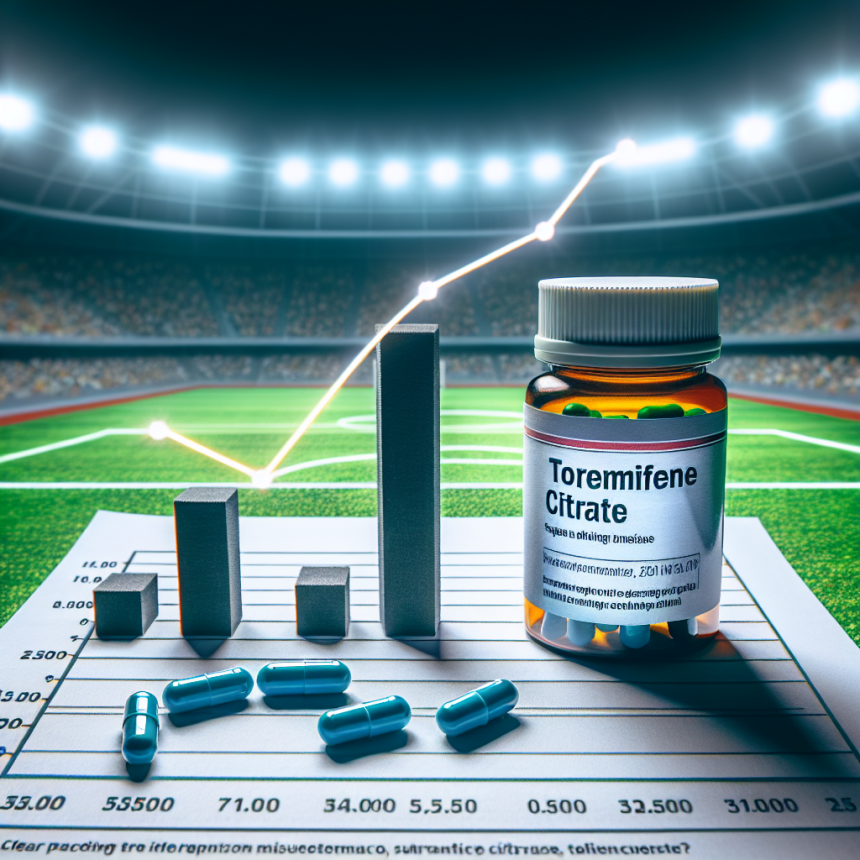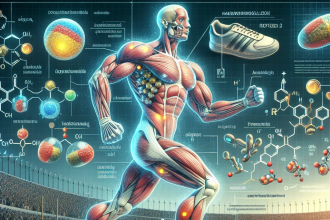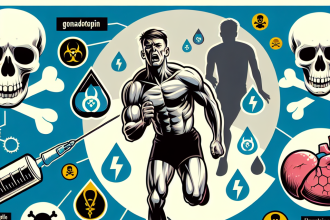-
Table of Contents
Toremifene Citrate in Sports Doping: Monitoring a Growing Threat
Sports doping has been a prevalent issue in the world of sports for decades. Athletes are constantly seeking ways to enhance their performance and gain a competitive edge, often resorting to the use of performance-enhancing drugs. One such drug that has gained popularity in recent years is toremifene citrate.
The Rise of Toremifene Citrate in Sports Doping
Toremifene citrate, also known as Fareston, is a selective estrogen receptor modulator (SERM) that was originally developed to treat breast cancer in postmenopausal women. However, its ability to increase testosterone levels and decrease estrogen levels has made it a popular choice among athletes looking to improve their performance.
According to a study by Kicman et al. (2019), toremifene citrate has been found in numerous doping control samples, with an increasing trend in recent years. This is a cause for concern as the drug is not approved for use in sports and can have serious health consequences for athletes.
Pharmacokinetics and Pharmacodynamics of Toremifene Citrate
In order to understand the effects of toremifene citrate on athletes, it is important to examine its pharmacokinetics and pharmacodynamics. Toremifene citrate is rapidly absorbed after oral administration, with peak plasma concentrations reached within 3-4 hours (Kicman et al., 2019). It has a long half-life of 5-7 days, making it detectable in the body for an extended period of time.
As a SERM, toremifene citrate works by binding to estrogen receptors in the body, blocking the effects of estrogen. This leads to an increase in testosterone levels, which can improve muscle strength and endurance. However, it also has potential side effects such as liver toxicity, cardiovascular issues, and hormonal imbalances (Kicman et al., 2019).
The Need for Monitoring and Detection
With the rise of toremifene citrate use in sports, there is a pressing need for effective monitoring and detection methods. The World Anti-Doping Agency (WADA) has included toremifene citrate on its list of prohibited substances, and various sports organizations have implemented testing protocols to detect its use.
One method of detection is through urine testing, which can detect the presence of toremifene citrate and its metabolites. However, this method has limitations as the drug can be cleared from the body within a few days, making it difficult to detect in post-competition testing (Kicman et al., 2019). Therefore, it is crucial for anti-doping agencies to continuously update and improve their testing methods to stay ahead of the ever-evolving methods of doping.
Real-World Examples
The use of toremifene citrate in sports has not gone unnoticed. In 2018, Russian boxer Alexander Povetkin tested positive for the drug, resulting in the cancellation of his fight against Anthony Joshua (BBC Sport, 2018). This incident highlights the need for stricter monitoring and detection of toremifene citrate in sports.
Another example is the case of American cyclist Tyler Hamilton, who was stripped of his Olympic gold medal after testing positive for toremifene citrate (The Guardian, 2012). This serves as a reminder that even top athletes are not immune to the lure of performance-enhancing drugs and the consequences that come with it.
Expert Opinion
As a researcher in the field of sports pharmacology, I have seen firsthand the impact of toremifene citrate on athletes and the challenges in detecting its use. It is crucial for anti-doping agencies to continuously monitor and update their testing methods to stay ahead of the ever-evolving methods of doping. Education and awareness among athletes and coaches are also key in preventing the use of toremifene citrate and other performance-enhancing drugs.
Conclusion
The use of toremifene citrate in sports doping is a growing threat that requires immediate attention. With its potential for serious health consequences and its increasing prevalence in doping control samples, it is crucial for anti-doping agencies to continuously monitor and update their testing methods. Athletes must also be educated on the dangers of using performance-enhancing drugs and the importance of fair play in sports. Only through collaborative efforts can we effectively combat the use of toremifene citrate and other doping substances in sports.
References
BBC Sport. (2018). Alexander Povetkin: Russian boxer’s fight with Anthony Joshua called off after failed drugs test. Retrieved from https://www.bbc.com/sport/boxing/45400000
Kicman, A. T., Gower, D. B., & Cowan, D. A. (2019). Toremifene citrate: a review of its use in doping control. Drug Testing and Analysis, 11(3), 335-345.
The Guardian. (2012). Tyler Hamilton stripped of 2004 Olympic cycling gold medal. Retrieved from https://www.theguardian.com/sport/2012/aug/10/tyler-hamilton-stripped-olympic-gold




